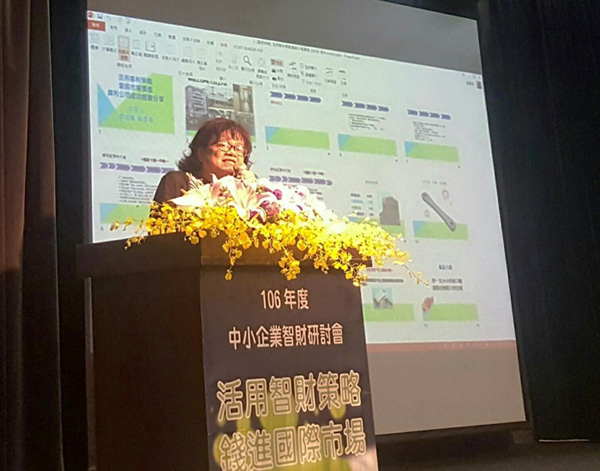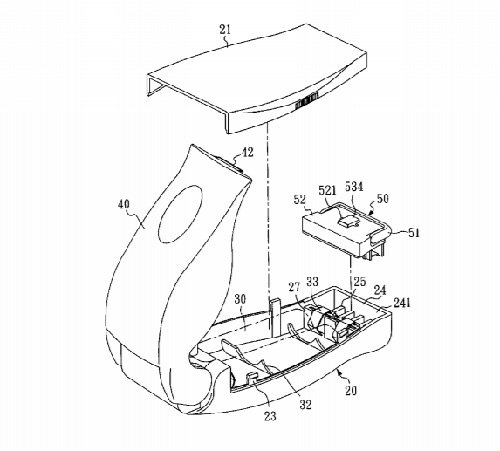
If you’ve launched a small business based on a product which you invented, you might think at this point in your development you’re not ready to invest in intellectual property and that if you don’t kick the hornet’s nest the hornets won’t come for you. It might come as a shock, then, that a company could approach you and ask you for license fees for your own invention, but this is a very real possibility. This was the experience of Ammy Chou, the CEO of Welcome Co., a Taiwanese tool and household appliance design and manufacturing company founded in 1979.
The company now has a portfolio of almost 200 patents and previously held around 300 patents at one time, but this wasn’t the case in the early development of the firm. The company started out manufacturing and selling plum blossom shaped ratchet wrenches, multipurpose scissors and multipurpose wire strippers/cutters. They later forayed into other product lines, including staple guns, electric sealers, electroscope pens, miniature vacuum cleaners and DIY goods.

Figure 1: The drawing for US Patent No. 7700897 B2, a hand-held electric sealer having a detachable electric sealing module, one of Welcome Co.’s portfolio of patents; Source: USPTO
The first time that Chou became aware of patent issues, she stated, was over forty years ago when she was still working in the company that would subsequently spin off her current company.
She received a call around the Chinese New Year Holiday from a law firm requesting a meeting with her to arrange a licensing fee for the technology behind a product that her company had invented and designed itself. The other party in question was aware that she was the inventor of the technology in question but informed her that she’d failed to secure the patent on the technology. They offered her a discounted licensing rate of NT$1 (US$0.033) per item, whereas others had been asked for NT$3 (US$0.099) per item, given that they knew she was the inventor.
Her clients were outraged on her behalf and attempted to provide different forms of proof to show that her company had been first to manufacture the product in question, but however unreasonably, the other company had been first to the punch in applying, so client testimonies, export tax declarations, catalogs and advertising material was all useless as evidence. Fortunately, however, in order to be eligible for export, the company had applied for a certificate of conformity for tax rebate purposes, which included an official record of every component of the product, which served as adequate evidence to avoid paying the licensing fees.
Chou’s story goes to show that regardless of whether or not you try and do things by the book, without protecting your intellectual property, you risk playing victim to patent trolls or losing out to your competitors. Patents are something that can’t be avoided if you are an innovative company, as sooner or later you’ll face a situation similar to that of Chou’s company, in which you are prevented from selling a product even if you developed it yourself.
After this experience with patents, Chou then rushed to secure a patent, but without first really gaining a clear understanding of the differences between patents. She had been granted a design patent, and, although she was able to prevent another party from counterfeiting her products, other parties could easily design around her patent, and the term was relatively short.
Taiwan Patent Type |
Patent Term |
Examination |
Invention Patent |
20 years from filing date |
Substantive |
Utility Model Patent |
10 years from filing date |
Formalities |
Design Patent |
12 years from filing date |
Formalities |
It was thanks to her earlier experience with patents that Chou was one of few companies that weren’t required to pay compensation under Section 301 of the US Trade Act in an action involving staple guns. Those most heavily penalized under this action, had to pay US$200,000 in compensation. Chou’s firm was able to avoid paying compensation because they had been aware of the importance of intellectual property and had ensured that they designed their products in a different way to existing art both in terms of its structure (she used a pulley system design) and its external design.
Chou has developed her intellectual property portfolio to the extent that, in contrast to most Taiwanese firms operating in the US, she finds herself in the role of the plaintiff, where most Taiwanese firms are usually defendants in intellectual property litigation in the US and has been able to secure compensation in many cases. This has not been hawkishness on her part, but in order to protect the rights of her clients.
One of Chou’s products was being infringed by 30 companies at one point and suing for patent infringement in the US is quite costly. One technique she has employed to reduce lawyer fees is having junior lawyers working on the case, as opposed to more senior figures in law firms. Welcome was successful in suing all of the companies that infringed and was even able to secure preliminary injunctions in each case. Chou insists that infringing companies apologize on all platforms on which they sold infringing goods, and also insists on companies destroying all infringing goods. She said that some companies claim ignorance of infringement and promise to buy from her company in future, but ask if they can sell off their remaining stock before doing so, a request she always refuses.
In the process of litigation, many companies may think of applying for an injunction from the US International Trade Commission. Chou worried that the sheer amount of products that go through customs every day would make this kind of injunction difficult to enforce. For this reason she chose to pursue a more risky strategy by pursuing preliminary injunctions in court.
[Although Chou was concerned about the inability of customs officials to detect counterfeits and illegal imports, you may be interested in the new platform being rolled out by the World Customs Organization that could help you protect your product from illegal imports and counterfeiters. View our previous report by following the link below:
‘Detecting Counterfeit Goods With Help From Customs With The WCO’s IPM Platform’.]
To secure a preliminary injunction in court, she had to put down US$250,000 as collateral for the injunction. The risky aspect of this strategy is that the US$250,000 would only be returned to her if she was successful in the patent infringement suit. She stated, however, that one needs to take into account the kind of product that is being litigated, particularly if the product’s life will already be over by the time litigation concludes.
Preliminary Injunctions:
The plaintiff must establish:
(1) that it is likely to succeed on the merits;
(2) that it is likely to suffer irreparable harm in the absence of preliminary relief;
(3) that the balance of equities tips in its favor; and
(4) that an injunction is in the public interest.
Before applying for a patent, Chou advises companies to do their due diligence. This involves conducting patent searches for similar inventions within ten years and preserving records of the invention’s research and development as evidence may be needed to prove that you are the inventor of the product in question. In any catalog or advertising materials you should clearly specify that you’re in the process of filing a patent for the inventions or products featured, as this will strengthen the case for intentional infringement if it comes to court proceedings.
Another aspect companies should take into account is that if you want to offer any real protection for your product, you should make sure that the invention as featured in the product fits with the claims as specified in the patent. If your product is not within the scope of your patent claims then even if a competitor counterfeits your product, it won’t necessarily infringe on the patent.
If you would like to apply for a patent in Taiwan and want more information on how to do so, you can consult our previous article: ‘How Can I Apply for a Patent in Taiwan and How Much Does It Cost?’.
 |
|
| Author: |
Conor Stuart |
| Current Post: |
Senior Editor, IP Observer |
| Education: |
MA Taiwanese Literature, National Taiwan University
BA Chinese and Spanish, Leeds University, UK |
| Experience: |
Translator/Editor, Want China Times
Editor, Erenlai Magazine |
|
|
|
| Facebook |
|
Follow the IP Observer on our FB Page |
|
|
|
|
|
|

